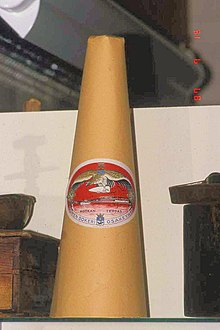**Historical Evolution of Sugar Production:**
– Sugarcane originated in India and Southeast Asia, with different species originating in various locations.
– The Gupta dynasty in India discovered how to crystallize sugar around 350 AD.
– Arabs adopted sugar production techniques from India, establishing large plantations in the Muslim World and Europe.
– Sugar cultivation spread to the West Indies and the Americas in the 16th century, with advancements in refining techniques over time.
– Sugar refining methods evolved from grinding cane to steam-powered mills and centrifuges.
**Spread and Impact of Sugar Cultivation:**
– Sugar spread from Mesopotamia to the Mediterranean and East Africa, reaching Europe through the Crusades.
– Labor-intensive production challenges were faced, leading to the use of slavery in early European sugar production.
– Sugar production expanded to the Atlantic islands and the New World, significantly impacting global trade and economies.
– The rise of sugar as a valuable commodity led to increased consumption and production in the Caribbean and Europe.
**Development of Sugar Industry Techniques:**
– Mechanization of sugar production began in the late 18th century with the introduction of steam-powered mills and refining methods.
– Beet sugar emerged as a significant alternative in the early 19th century, promoted by Napoleon during the British blockade.
– High-fructose corn syrup replaced sugar in some uses in the US and Japan, with concerns about its health impacts.
– Sugar tariffs and quotas were implemented in the US in 1977, leading to a shift towards high-fructose corn syrup due to cost considerations.
**Global Expansion of Sugar Production:**
– Sugar production spread to South America, Africa, and the Pacific, utilizing indentured labor and African enslaved people.
– Industrialization of sugar production occurred in Colombia in 1901, with large-scale transfers of people for sugar cultivation.
– The rise of sugar plantations in the Caribbean, particularly in Cuba, revolutionized modern milling methods and production techniques.
**Research and Literature on Sugar:**
– Chemical experiments in the 18th century led to the extraction of sugar from various plants, including beets.
– The impact of sugar trade on the global economy has been significant, with the USA being a major producer of sweeteners.
– Various books and academic works delve into the historical significance and health implications of sugar consumption.
– The refining process of sugar has a dark history, including the use of enslaved people’s bones, as discussed in literary works like ‘White Fury’.
The history of sugar has five main phases:
- The extraction of sugar cane juice from the sugarcane plant, and the subsequent domestication of the plant in tropical India and Southeast Asia sometime around 4,000 BC.
- The invention of manufacture of cane sugar granules from sugarcane juice in India a little over two thousand years ago, followed by improvements in refining the crystal granules in India in the early centuries AD.
- The spread of cultivation and manufacture of cane sugar to the medieval Islamic world together with some improvements in production methods.
- The spread of cultivation and manufacture of cane sugar to the West Indies and tropical parts of the Americas beginning in the 16th century, followed by more intensive improvements in production in the 17th through 19th centuries in that part of the world.
- The development of beet sugar, high-fructose corn syrup and other sweeteners in the 19th and 20th centuries.


Sugar was first produced from sugarcane plants in India sometime after the first century AD. The derivation of the word "sugar" is thought to be from Sanskrit शर्करा (śarkarā), meaning "ground or candied sugar," originally "grit, gravel". Sanskrit literature from ancient India, written between 1500 and 500 BC provides the first documentation of the cultivation of sugar cane and of the manufacture of sugar in the Bengal region of the Indian subcontinent.
Known worldwide by the end of the medieval period, sugar was very expensive and was considered a "fine spice", but from about the year 1500, technological improvements and New World sources began turning it into a much cheaper bulk commodity.
